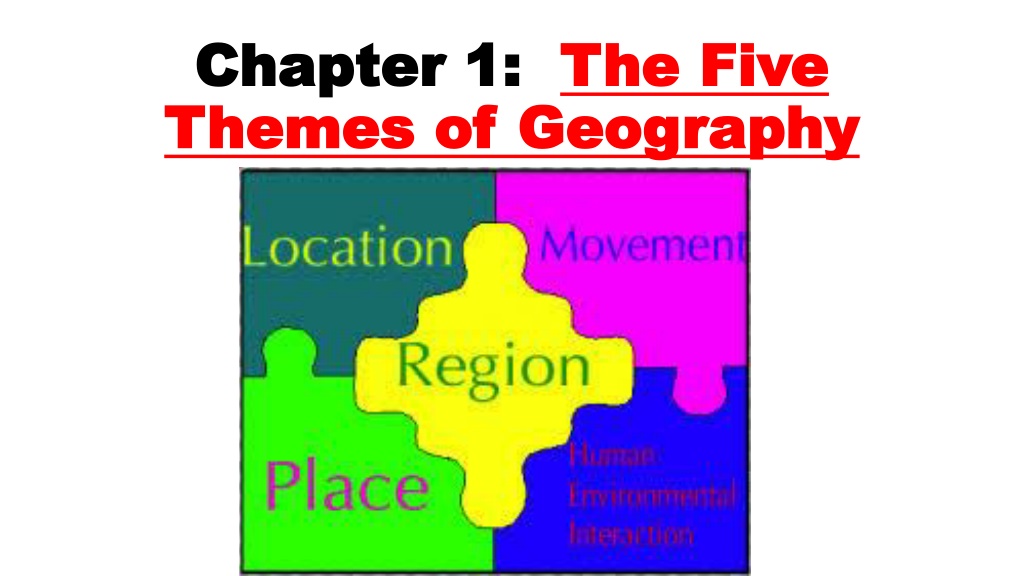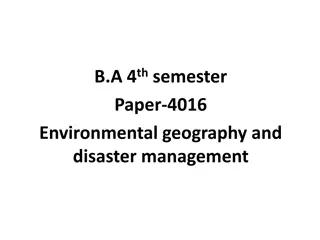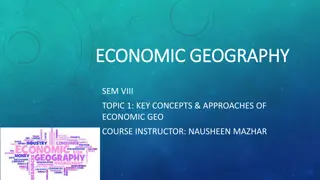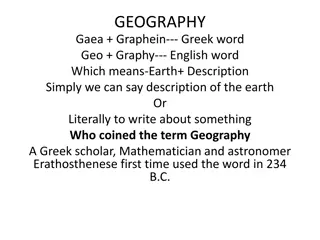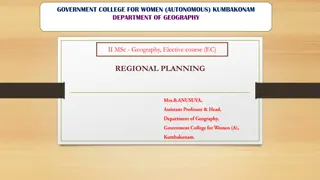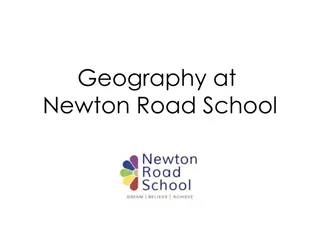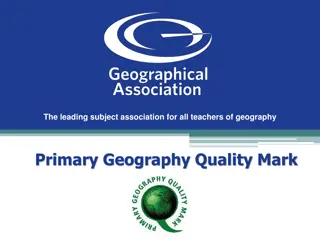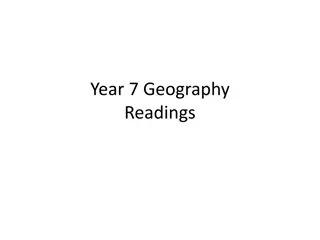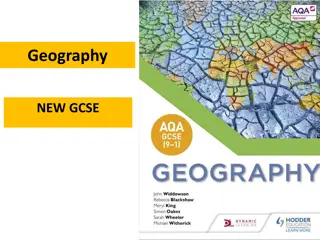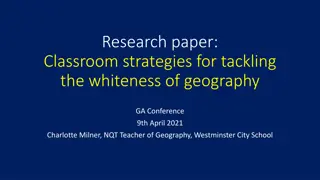The Five Themes of Geography: Overview and Tools
Geography involves studying the distribution and interaction of physical and human features on Earth. Geographers use various methods like maps, photographs, and charts to understand spatial patterns and changes over time. Learn about absolute and relative location, hemispheres, and latitude and longitude lines. Dive into the theme of place, which encompasses both physical and cultural attributes of a location.
Download Presentation

Please find below an Image/Link to download the presentation.
The content on the website is provided AS IS for your information and personal use only. It may not be sold, licensed, or shared on other websites without obtaining consent from the author.If you encounter any issues during the download, it is possible that the publisher has removed the file from their server.
You are allowed to download the files provided on this website for personal or commercial use, subject to the condition that they are used lawfully. All files are the property of their respective owners.
The content on the website is provided AS IS for your information and personal use only. It may not be sold, licensed, or shared on other websites without obtaining consent from the author.
E N D
Presentation Transcript
Chapter 1: Chapter 1: The Five Themes of Geography Themes of Geography The Five
What is geography? What is geography? Geography is the study of the distribution and interaction of physical and human features on the earth.
Methods of Geography Methods of Geography Geographers use a variety of tools to study the use of space on earth. The most common one is a map. (written and mental)
Geographers also use photographs to gain visual evidence about a place. They organize information into charts, graphs, or tables to learn about geographic patterns and to understand change over time.
Theme: Location Theme: Location Absolute location: the exact place on earth where a geographic feature is found.
Relative location: describes a place in comparison to other places around it.
Earth is divided into two equal halves. Each half of the globe is called a hemisphere.
The equator is the imaginary line that divides the north and south halves. The prime meridian is the imaginary line dividing the earth east and west.
Latitude and Longitude Latitude and Longitude Longitude lines mark positions in the east and west hemispheres. Latitude lines mark positions in the north and south hemispheres.
Theme: Place Theme: Place What is it like? Place includes the physical features and cultural characteristics of a location.
Theme: Region Theme: Region Question: How are places similar or different? Regions usually have more than one characteristic that unifies them. These may include physical, political, economic, or cultural characteristics.
Formal Regions Formal Regions The United States and Canada Latin America Europe Russia and the Republics Africa Southwest Asia South Asia East Asia Southeast Asia, Oceania, and Antarctica
Theme: Human Theme: Human- -Environment Interaction Environment Interaction Question: How do people relate to the physical world? The relationship between humans and the environment.
Theme: Movement Theme: Movement Question: How do people, goods, and ideas move from one location to another? Geographers analyze movement by looking at three types of distance: linear distance, time distance, and psychological distance.
Linear distance: how far across the earth a person, an idea, or a product travels.
Time distance: the amount of time it takes for a person, an idea, or a product to travel.
